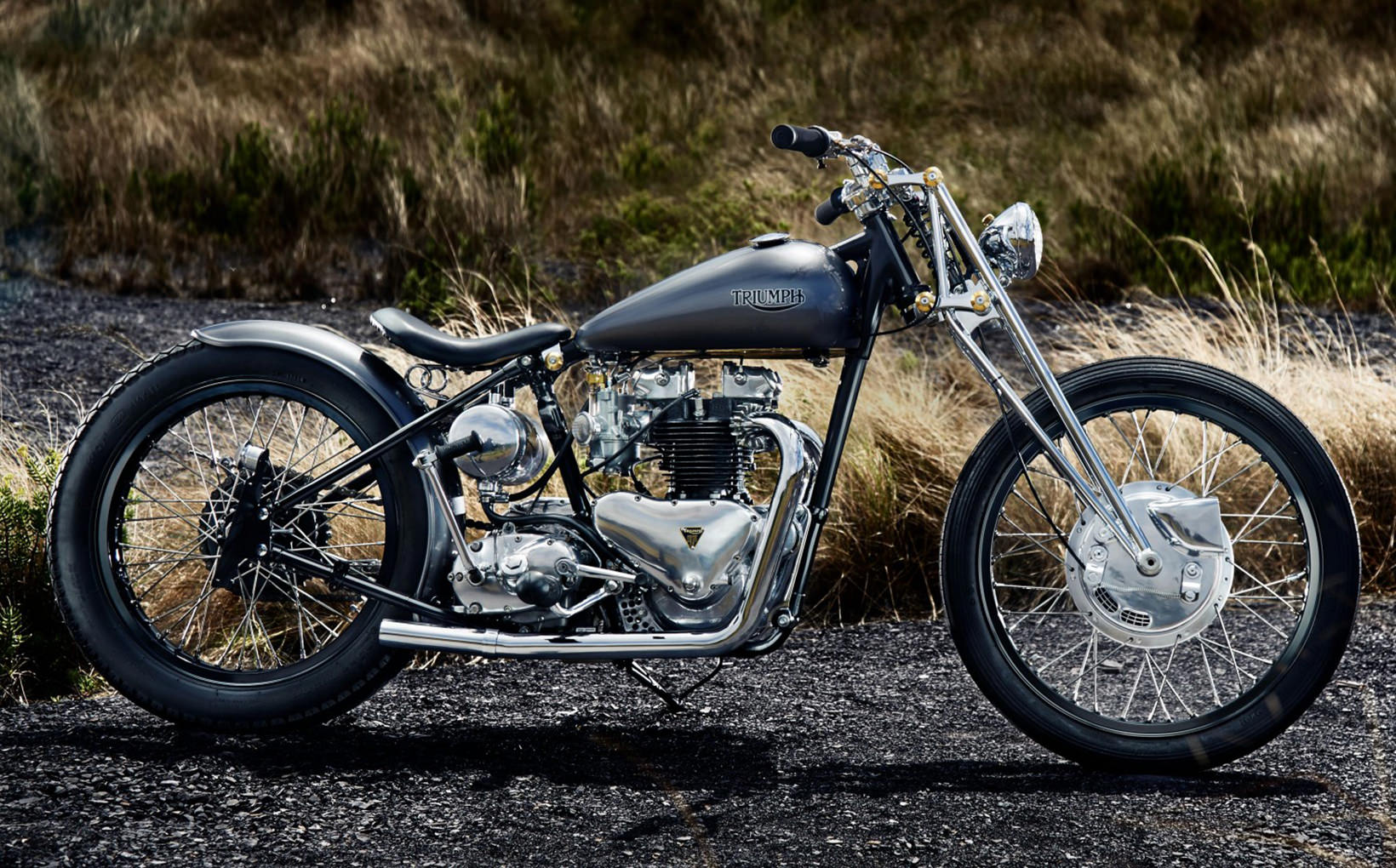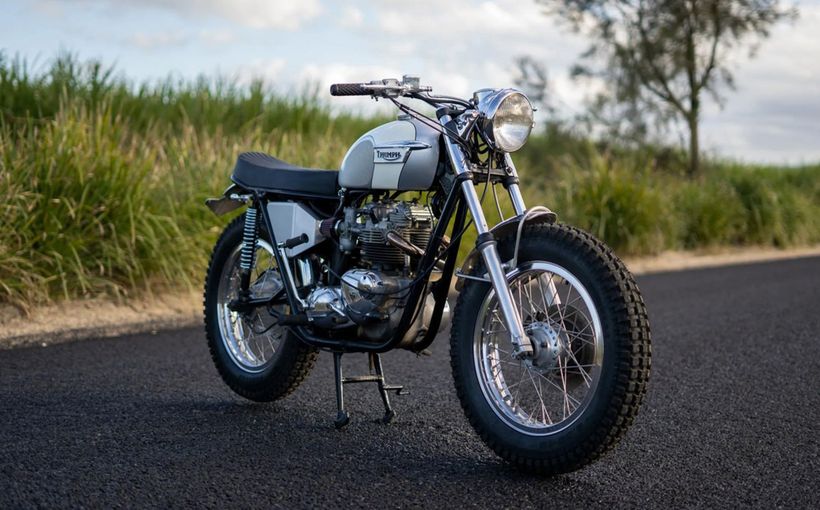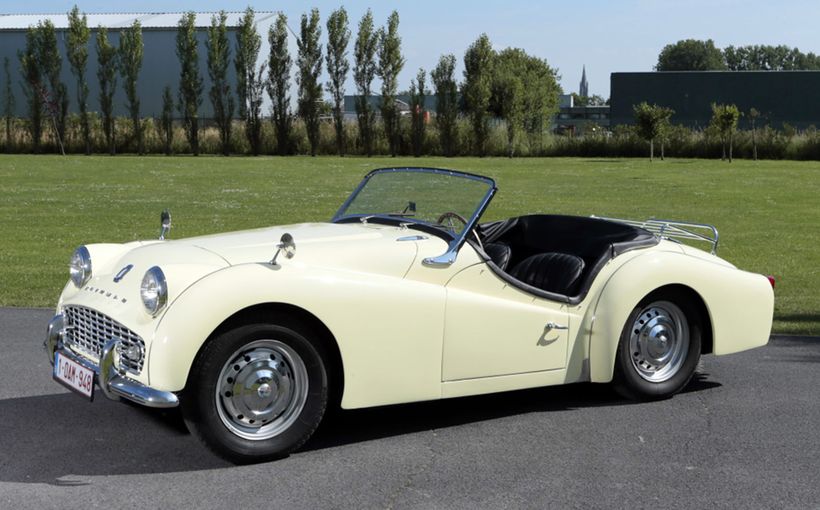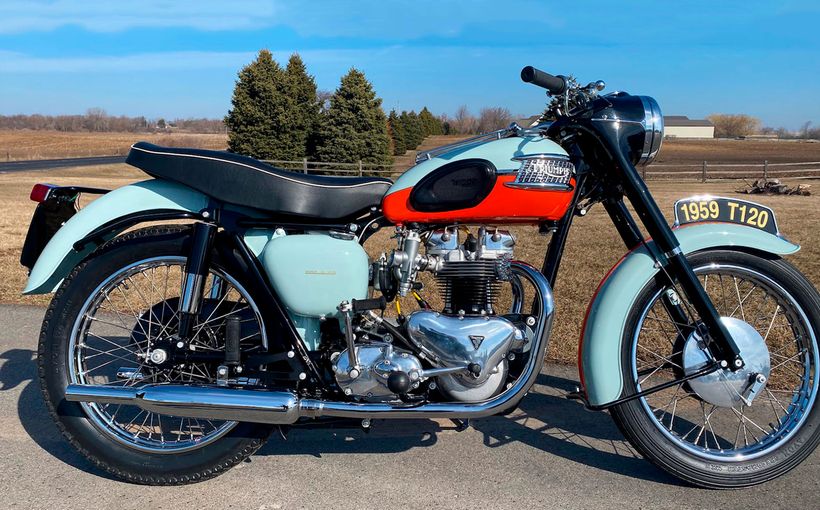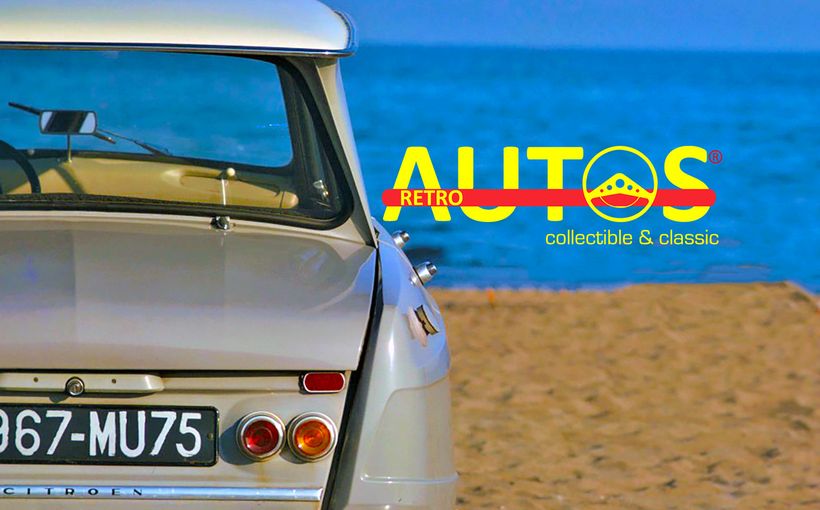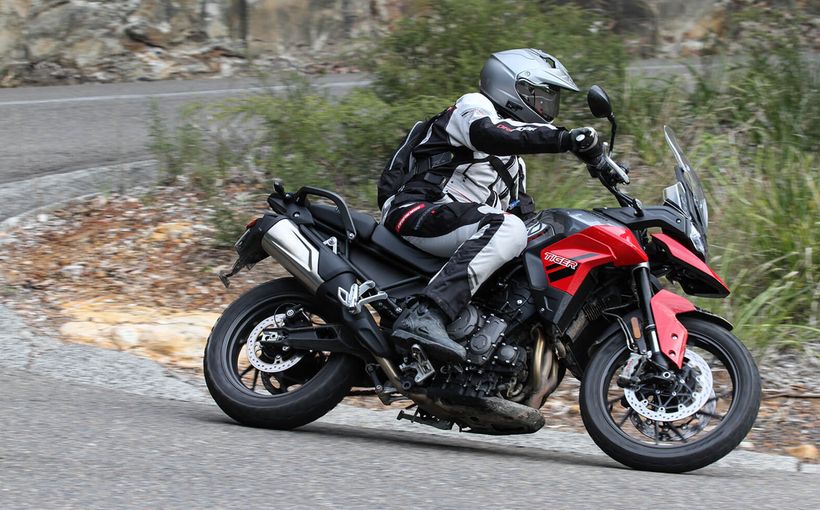Paul’s 1949 Triumph Speed Twin: When Less is More

Minimalism as an art form requires the essence of a subject to be revealed by removing everything which may distract from it. Clearly, Shannons Club member Paul Berger has embraced minimalism in defining what matters to him on this sublime Speed Twin.
“Getting something to look simple and just right is incredibly difficult,” Paul admits when reflecting on the painstaking creation of this custom hardtail bobber. “I think the greatest challenge was not what to do, but what NOT to do.
“Trying to keep things consistent and minimal and not allowing one element to distract from another. Overall, the stance of the bike and getting the right visual flow from the tank to the seat to the rear guard was the hardest thing to get right.”
And we must say his resolute commitment to accepting nothing less than two-wheeled perfection has produced a profoundly elegant and stunning result.

Image: Triumph
Those familiar with the Speed Twin (see image below) would acknowledge that Paul’s unique interpretation is so far removed from the original as to be barely recognisable, if not for its iconic 500cc vertical twin-cylinder engine and separate four-speed gearbox.
Released in 1938 to rave reviews, the Edward Turner-designed Speed Twin was Britain’s first successful mass-produced design of its type. It ensured Triumph’s post-war resurrection after the company’s premises in Coventry were destroyed in a German air raid. And it inspired many British rivals to produce similar designs.
With numerous changes during its long production life, including the addition of controversial enclosed body fairings and the crankcase/gearbox being combined in a single unit, the venerable Speed Twin remained in new model showrooms until the mid-1960s.
Paul says his love of classic English bikes stems from his father, who owned a Speed Twin-related Tiger 100 when he was growing up. Like dad, who is a qualified mechanic, Paul and his two brothers spent their youth pulling apart and rebuilding their bikes for fun and competition use; the latter including motocross, short circuit and even jumping through hoops of fire as members of a stunt display team.

Image: Triumph
Although Paul didn’t follow his father into the automotive trade (he instead established a successful software development company in Sydney), his passion for classic motorcycles remained strong. So, when Paul’s mother passed in 2013, he thought his father would benefit from a mechanical project to keep him busy in her absence and provide a perfect topic of conversation during regular interstate phone calls.
Hence the purchase of a dismantled 1949 Triumph Speed Twin from Goulburn in regional NSW, which comprised the ‘pre-unit’ frame, engine, gearbox, rear wheel and a box of bits. Paul then shipped this lot to his dad in Queensland for a complete engine and gearbox rebuild which took around 18 months.
However, from the outset this was going to be a custom build, not a restoration. Paul made a few core decisions on what form it would take, inspired by US-based custom designer/builder Falcon Motorcycles and its minimalist Triumph ‘Kestrel’ masterpiece.

Image: Paul Berger
“This bike was to be a hardtail bobber with a girder front-end, 21-inch front and 19-inch rear wheels,” Paul reflects. “While stylistically I was aiming for a minimal look, I wanted to retain classic Triumph features like the pre-unit engine and separate gearbox. I also wanted to use the original frame and keep the six-volt wiring, which was a bit of a personal challenge utilising my electronics background. And, it had to be rideable.”
With the engine and gearbox rebuilt to perfection by his dad, Paul shipped the now partly-assembled Speed Twin back to Sydney to commence its multi-year transformation into the automotive artwork exhibited here.
To make it happen, he collaborated with “a number of talented people” in Australia and overseas to ensure premium quality was evident in each area of the build that he did not have the time or skills to tackle himself. This included the final strip and rebuild by “hard-core Harley guy” Brett Williams which showcased peerless standards of craftsmanship.

Image: Paul Berger
To adapt an old-school girder front-end to the Triumph’s 1949 frame (thereby replacing the original telescopic forks fitted to all post-war models), Paul contacted California’s Spitfire Motor Cycles which supplied a pair of custom Harley girders resized to suit Paul’s specific measurements:
“The original (Spitfire) girder front-end came with two modern billeted shocks that looked way too complicated. It dawned on me that a Harley is probably two or three times the weight of this bike, so I replaced the two billet shocks with a single Fox mountain bike shock from a bicycle shop which required a fair bit of re-engineering to make it work.”
Paul imported the Borrani wheels from Italy, with the 21-inch front and 19-inch rear finished in anodised black with stainless steel spokes and wrapped in Avon rubber. The rear drum brake is stock but the twin-leading shoe 8.0-inch front, which integrates beautifully with the girder, is from an early 1970s Triumph.
Paul steers it with 32-inch Flanders drag-bars mounted on Roland Sands risers. These handlebars are equipped with more Italian-sourced hardware in the form of Kustom Tech’s 1.0-inch throttle housing and hand controls.

Image: Paul Berger
Getting “the right visual flow from the tank to the seat to the rear guard” started logically with the elegant fuel cell, which consists of separate tanks sitting either side of the top frame tube.
This became the design feature that set the tone for the bike. Paul had three key ideas in mind: the tank needed to sit as low as possible to follow the line of the frame (hence the split-tank idea), taper to a point that meets the seat and leave a clean gap between the tanks to expose the engine.
Rather than build these tanks from scratch, he sourced a “really big fat-arse Harley tank” and had “Steve O” split it into two and masterfully reshape it to Paul’s exacting requirements. The tanks are discreetly fixed together by a stainless pin hidden under the top frame tube.

Image: Paul Berger
Continuing the visual flow from tank to seat required buying numerous seats to play around with before Paul chose a Biltwell Slimline, which he pulled apart and had Tim and Joe at Impact Metal Works fabricate a custom pan and bracket which enabled use of the original seat's mounting point. The pan sits on a pair of hairpin springs to provide a modicum of suspension movement (given the hardtail frame) and is upholstered by Jeff Squires Trimming in fine-grained leather.
The third element of that visual flow is the rear guard. Paul had a set of front and rear guards handmade by Joe from Cooper Smithing Co in Washington State. Paul’s cousin John Abbott, a skilled panel beater, fabricated mounting brackets for the rear guard only, as Paul chose not to fit the front guard due to his minimalist goal.
The elegant colour for the tank and rear guard, applied by John McKenzie Smash Repairs, was chosen after Paul purchased a new Triumph Thruxton R finished in Silver Ice. That discreet hue immediately appealed as the colour for the Speed Twin, given the historical link between old and new Triumphs. ‘Dutchy’ painted the black framework while Blu-Chrome perfected the chrome-plating and metal-polishing.

Image: Paul Berger
Although the 500cc parallel twin is basically stock, there’s some lovely detailing. Paul liked the idea of velocity stacks (aka inlet trumpets) hanging out each side of the engine so the original 30mm Amal carburettor was replaced by two 26mm Amals, fed by a pair of custom banjos made by Troy Fabrication in the US so that a single clear fuel line from each tank feeds each carby: “Tip to self – always fill both tanks at the same time!” Paul quips.
The Moon Eyes oil tank under the seat supplies the engine’s dry-sump system and those exquisite exhaust pipes are Australian-made and supplied by Bob at Classic All Parts, which although off-the-shelf items fitted perfectly and sounded just right.
One of Paul’s build requirements was keeping the traditional six-volt electrics but scratch-built with traditional cloth-covered wiring and modern efficiency. In keeping with the minimal theme, a Garmin Edge 25 speedo is a tiny self-contained GPS-based unit that simply clips onto the handlebars when required.

Image: Paul Berger
The only switch on the bike is a brass four-position rotary dial, controlling stop, start and headlight beams, mounted on a 4.0-inch headlight unit with LED lamp. The combined tail/stop light is custom-made with its red LED lamp cleverly housed inside an Amal carby velocity stack. This lamp unit is mounted to a custom licence-plate bracket illuminated by another LED.
“While it’s not a bike you’d use every day, it is a really fun ride,” Paul concludes, given that this wonderful custom Speed Twin is road-legal. “Aside from begging for an extra gear or two and messing with my head with gear and brake levers flipped (old British/Euro bikes had left-side foot brake and right-side gearshift),
it is a great pub-hopper and certainly draws a crowd.”

